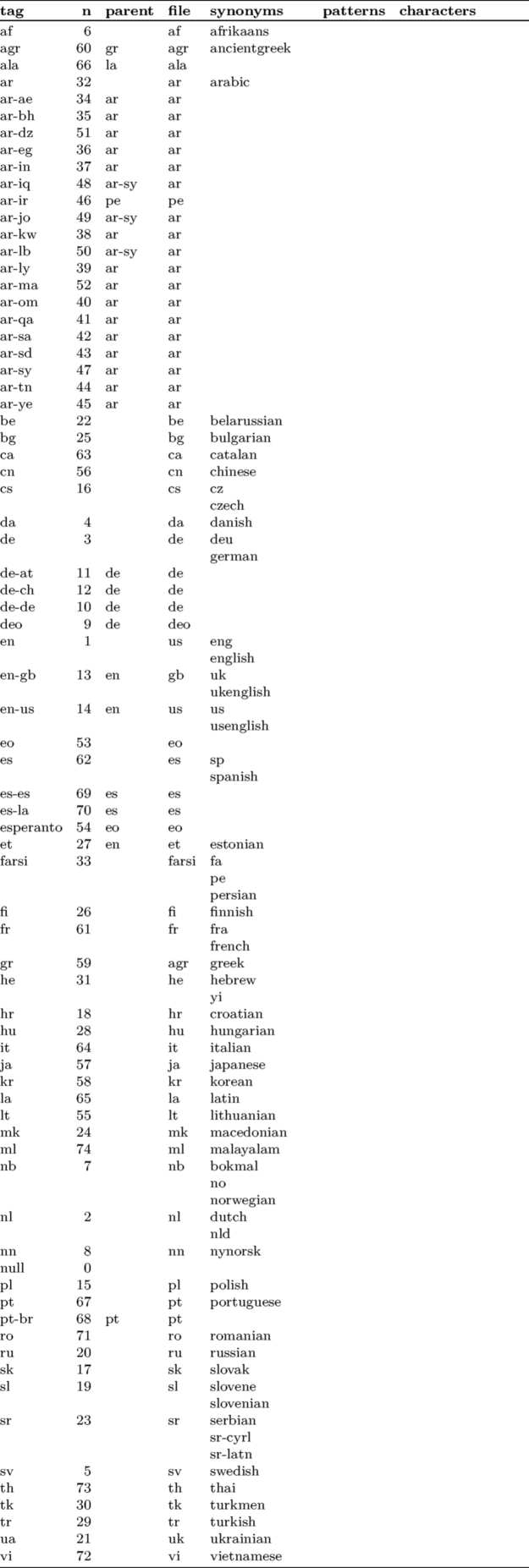Languages
Contents
Two commands to set up the language aspects
Today, with the international use of the UTF-8 standard for input and output encoding, you only need two commands, with the language tag you want in brackets:
- [[Command/mainlanguage[tag]|\mainlanguage[tag]]]
-
- to set the language of auto-generated language elements, like the title of the table of contents or the appendix,
- and to change the hyphenation rules, quotation marks, all that sort of thing, to that of a different language.
- [[Command/language[tag]|\language[tag]]]
-
- to change the hyphenation rules, quotation marks, all that sort of thing, to that of a different language. (The default language is English.)
\language is only needed when you use more than 1 language in a document, otherwise \mainlanguage is enough to change labels and hyphentation patterns.
ConTeXt's markup
ConTeXt has a multilingual interface to enable users to work in their own language. It is specified by setting the ConTeXt interface value in the first line of your input file:
% interface=encommands% interface=nlcommando’s% interface=debefehle% interface=czpřikazy% interface=frcommandes% interface=itcomandi% interface=rocomenzile
Language-specific pages
- Arabic and Hebrew
- Chinese Japanese and Korean
- Czech
- Greek
- Russian
- Vietnamese
- RTL for dealing with Right-To-Left texts as well as BiDi (bidirectional) texts
- French: French Punctuation and French spacing (old)
Language tags
Here's the list of ConTeXt's language tags, also available in the latest official Languages manual. Sources are available).
\usemodule[languages-system] \loadinstalledlanguages \showinstalledlanguages

Other links
Finally, for older content, we keep a page Encodings and Regimes - Old Content about including accents, composite characters, and how "ä" and alike were produced in LaTeX/ConTeXt mkii. Second Step gave an example for german language.